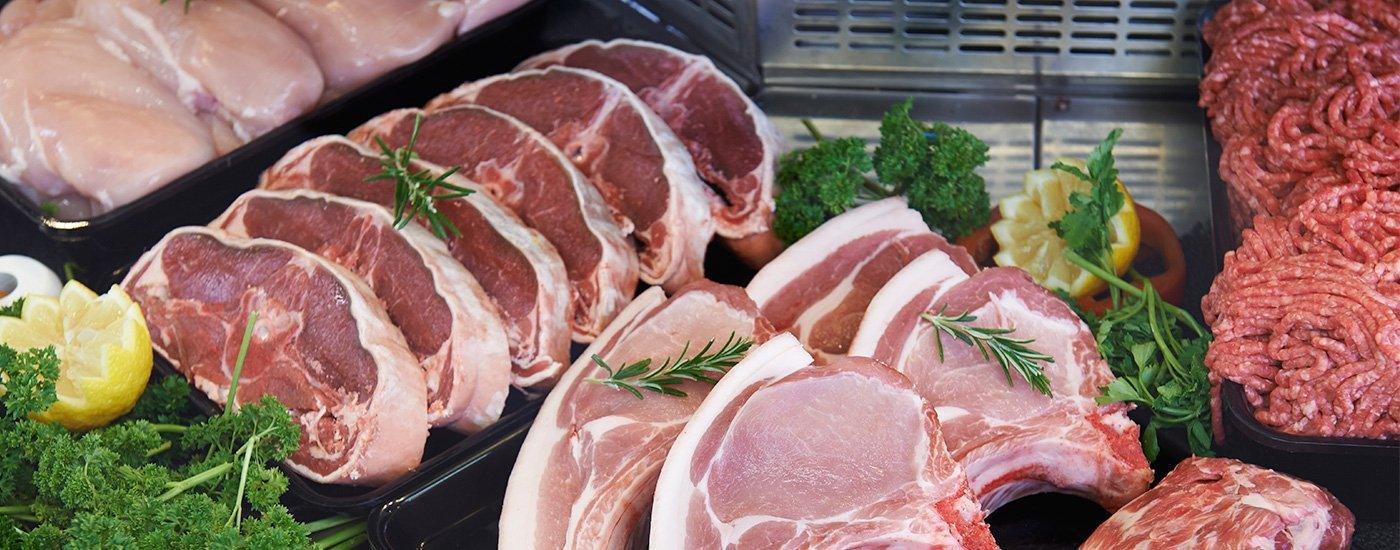A guide to different types of butcher knives and what they are used for.
Having a good understanding of different butcher knives and what tasks they are used for will help you select the correct knife for the job.
Let’s take a look at the most popular types of butcher knives.
TYPES OF BUTCHER KNIVES:
The Boning Knife
Long and thin, the boning knife is used to get a smooth cut around the bend and curve of a bone with a single, quick shave of the knife. Boning knives can come stiff or flexible, straight or curved. This knife allows you to trim meat, fillet fish, stripping away meat and flesh from bones and skin effortlessly. The idea is to leave as little meat behind as possible, so a super sharp, semi-flexible blade is likely the best choice.
The flexible version of the boning knife is more suited to use on fish and poultry while its stiff counterpart is a bit more sturdy and best fit for beef and pork.
View our range of boning knives here.
The Traditional Butcher Knife
The traditional butcher knife features a wide, curved tip that is useful in butchering and chopping large pieces of meat. It is also useful in skinning. The traditional butcher knife is still popular despite there being breaking and cimeter knives available today. Traditional butcher knives are made tough, with thick, heavy blades so you don’t have to worry about chipping or breaking your knife when using force to cut through bones and cartilage.
You can shop our butcher knives here.
The Cimeter Knife
A large, curved butcher knife, the cimeter is important to any butcher’s lineup of knives. The blade is heavy and wide with the ability to cut larger pieces of meat into smaller portions. An example would be cutting a slab of meat into steaks to be sold at retail. This blade can also be used to trim or slice away fat.
The wide blade is important in the butchering process as it is key in creating compact, uniform cuts and slices. The cimeter knife is often used in beef processing plants.
View our Cimeter knives here.
The Breaking Knife
Need a blade to break down a carcass? This is the one you would choose. This knife is the one to use when you need to use a long and curved blade to help you cut through a carcass. The size and shape of this blade helps you have a full range of motion, helping you get a clean cut through the meat. A tool you shouldn’t do without if you are a professional butcher or you butcher your own meat.
The Skinning Knife
This may seem like a no-brainer, but the skinning knife is used for (you guessed it) skinning animals. This knife is designed with a wide, sharp, and curved blade that allows the user to gut and skin the animal it is being used to butcher. The blunt tip is meant to help you not to puncture the skin of the guts while you work.
The blades are usually wide and normally about six inches long. Lamb-specific skinning knives are not as curved at the tip as normal skinning knives.
Need a regular skinning knife? Maybe one for lamb? View our skinning knives here.
The Cleaver
Probably the most recognizable butcher’s knife, the meat cleaver is large and heavy so as to cut straight through bones. A little lighter in weight than the traditional butcher's knife, this knife also features a somewhat thinner blade for a more precise cut.
Not found particularly often in home kitchens, the cleaver is found more often in a professional environment where chefs in restaurant kitchens use them. The meat cleaver has a super tough edge to withstand brute force hacking and chopping without chipping or breaking off into the meat and bone. The knife is really only as good as your own muscle as it isn’t a very sharp knife, it relies more on elbow grease than a sharp edge.
You can find a great Victorinox cleaver here.
The Steak Knife
When faced with an amazingly juicy steak in front of you, you’re going to want a great steak knife. You would be able to choose from three different types of steak knives too. This knife comes in either serrated, straight, or hollow. The most common being the serrated edge steak knife.
You also don’t want to be hacking away at your steak when trying to enjoy it, so the edge of a steak knife is usually very sharp. Found in nearly every single household, the steak knife is one of the most popular knives found in a residence. A lot of steak knives can cut through small bones as well as it does through meat.
-----
When finally deciding what butcher knives to buy, you have to take a lot into consideration. Not just what job you’d like to accomplish with your knives, but also the size and shape of the knife you want and even the handle of the knife.
So, whether you are looking for an entire lineup of butcher knives, skinning knives, cleavers, or just a really great steak knife, we have the knives you need.

